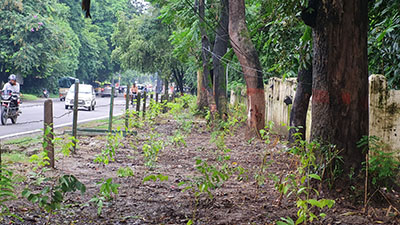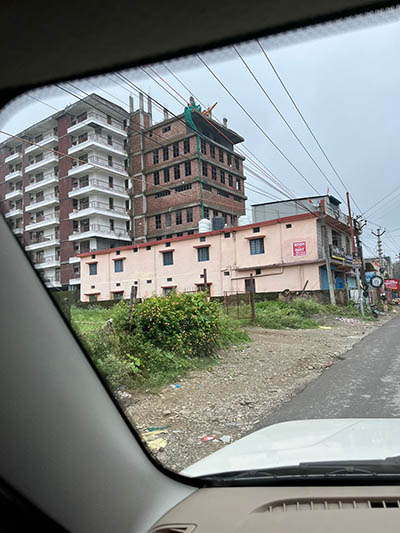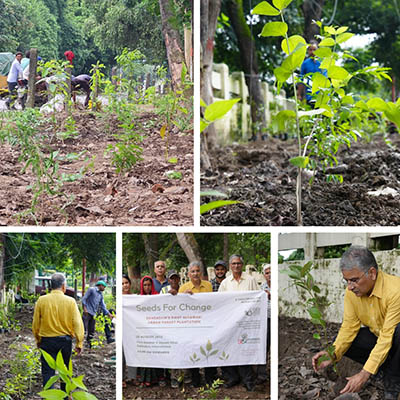DEHRADUN: The Doon city facing the loss of its green spaces due to urban expansion, took a new "green step" today to rejuvenate its environment.
In an effort to counter the increasing growth of housing colonies, educational institutions, and other infrastructures that have taken over the city's paddy fields, Doon residents joined hand and planted more than 300 native tree saplings using the innovative Miyawaki technique.
This "Miyawaki green step" promises of adding new "green lungs" to an otherwise shrinking green landscape of the Doon City facing music from concrete jungle spreading its tentacles from all sides.
The planting initiative was a collaboration between the Uttarakhand Forest Research Institute, SDC Foundation, and various community partners.
These organizations worked together to plant the saplings in the Vasant Vihar colony of Doon Valley. The commitment to the trees doesn't end with the planting; these groups have taken on the responsibility of nurturing the saplings for three years, ensuring their survival.
Anoop Nautiyal, President of the SDC Foundation, mentioned that a variety of native species, including amaltas, neem, and moringa, were planted in the Vasant Vihar.
Unlike traditional methods involving individual pits and organic fertilizers, the Miyawaki technique covers the entire planting area. This approach promotes natural competition and growth among the plants.
This new method, successfully introduced in the city, highlighted the effectiveness of innovative strategies for urban afforestation. "We can move on to the next areas", Nautiyal said.
Sanjiv Chaturvedi, Chief Conservator, applauded the initiative as a significant step toward a greener future. He envisions a harmonious coexistence between urban development and nature.
Dhirendra Sharma, President of a local community organization, echoed this sentiment and pledged support for the cause. He viewed the initiative as a catalyst for collective efforts in sustainable urban development.
Looking forward, Anoop Nautiyal hinted at upcoming eco-friendly projects. He emphasized that the venture was not just about planting trees; it was a commitment to nurturing and safeguarding the natural world that sustains us all.
Dehradun, once known for its expansive green paddy fields, has seen rapid urban growth, particularly in educational institutions in peripheries of the city from Vikasnagar to Prem Nagar and Badholi to other parts of city. But still these areas look green and needs to be protected as such.
The old city areas around the ISBT and on the main city life lines, there is a little bandwidth available for planning trees.
You find mushrooming of PGs, hostels and guest houses, hotels catering to the students and the staff and visitors in these areas.  ī
ī
This has led to a reduction in green open spaces as housing options for students and tourists have taken over.
Initiatives like these are expected to set an example of achievable impact when communities collaborate for a greener and more promising future for generations to come.





